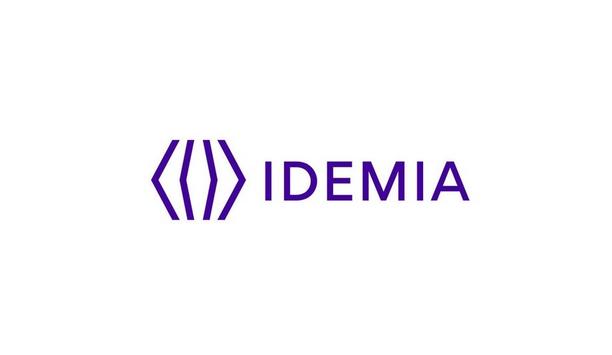What will be the biggest surprise for security in 2023
Editor Introduction
Like any year, 2022 was full of surprises for the physical security industry. Adapting to supply chain shortages, lightning-fast technology development, and changing occupancy patterns in a shifting labor market were just a few of the factors that kept security professionals guessing in 2022. Wonder what the new year will hold? We asked this week’s Expert Panel Roundtable: What will be the biggest surprise for security in the year ahead (2023)?
The COVID-19 pandemic has changed our understanding of contagious diseases. From reducing physical contact to maintaining distance from others, many COVID-era norms are here to stay. For the physical access control industry, this means limiting physical contact with equipment, card readers and door handles will continue to be important—in 2023 and beyond. It is no surprise ‘touchless’ technologies thrived throughout quarantine. However, it may surprise industry professionals how important these tools will remain, going forward. In 2023, the responsibility will fall on organisations to enable individuals to enter a secure area without the need to touch any surface or carry any badge, token, or cell phone, ensuring employees and visitor safety without compromising security. Many touchless technologies exist today, such as facial recognition, fingerprint readers and voice pattern recognition. Which emerges as the most cost effective and least intrusive, however, will win the day.
In 2023, growing social and political polarisation will limit the number of resources to effectively prevent and investigate crime. Organisations with publicly accessible storefronts face the most significant problems, since in many cases, the security measures necessary to meet compliance requirements and ensure the safety of personnel and assets may exceed profits. Furthermore, maintaining a visible security presence may increase the potential for violence, rather than diminishing the threat. In the year ahead, organisations will likely be surprised by the lack of resources and ultimately will need to be prepared to fill the gap. Organisations will begin to pay higher prices for trained and qualified protection professionals, while also shifting their paradigm to address threats using protective intelligence. Overall, filling the void and preventing threats will require that security teams and companies hire protective intelligence analysts and invest in technology and early warning data that allows security teams to be proactive.
November 5th marked the one-year anniversary of the fatal 2021 Astroworld Festival (in Houston, Texas), which left ten dead, 25 people hospitalised and many more with minor injuries. Though incidents like crowd surges, medical emergencies, and egregious behavior (e.g., fights, theft, sexual assault, and active shooters) happen regularly at large venues, this event has remained top-of-mind in the live music industry. In many ways, it reminds us how little control we have during such incidents. Now that large event attendance has returned to pre-COVID numbers, I expect the biggest surprise for the security industry will be that event security staff will be overwhelmed during these kinds of incidents. Not many fan engagement security improvements have happened since Astroworld. As attendance numbers continue to grow, it will become imperative to lean on cloud-based apps to provide crowdsourced intelligence to improve incident response times and offer security personnel a force-multiplying tool.
It may not seem surprising, but the way that technologies will continue to build off each other and work together will be important in 2023 and have a big impact on security, especially for IT, OT and cybersecurity as they continue to come together. These sectors have their clear links, and convergence in physical security trends will continue to gain traction in the upcoming years. Modern technology continues to blur the lines between the physical and digital worlds, and synergies between these sectors will deliver seamless and cost-effective solutions. Digital integration is also allowing for two-way communication between building managers and security professionals, giving them the opportunity to choose how they want to respond depending on the situation. Not only does two-way communication further the digital journey of security, but it also allows facilities to respond to each specific scenario in the appropriate and unique way that situation may require.
One of the major changes I expect in 2023 is the return to the office — at least in a hybrid manner — for many employees who have been working remotely since the onset of the pandemic. This major shift back to employees being in physical buildings will drive companies to look for ways to utilise their existing security infrastructure to provide “beyond security” insights such as building occupancy, utilisation, and management. We will better understand the use of buildings via access control data including varying occupancy levels, times that people are transiting entrances and exits, movement within the estate, and more. This expanded role of electronic access control will provide additional opportunities for ROI from these types of deployments. Remote access control can allow the hybrid work approach to be as effective as in person. Security Administrators can add or remove credentials remotely for visitors or new employees. Video Management Systems can be used not only to perform security operations, but also for remote management of people access to secure spaces, verification of access requests, interactive hosting, and improved business insights.
They aren’t perhaps that surprising, but two trends that I think will dominate the security scene in the year ahead will be increased cyber threats and the broader adoption of AI in more market segments. Cyber threats are always a concern, but current global instability amplifies this further. A new survey from IEEE that polled 350 senior IT people, showed that 51% of respondents mentioned cloud vulnerability as a top concern (up from 35% in 2022) and 43% mentioned data center vulnerability as a top concern (up from 27% in 2022). Other areas of concern include ransomware attacks (30%), coordinated attacks on an organisation’s network (30%), as well as a broader lack of investment in security solutions (26%). With physical security systems being a key part of the IoT mix, the cyber security element cannot be underestimated. Also, as many sectors look to do “more with less,” the use of some elements in the AI “kit bag” will see it being introduced in more market segments. A prime focus might be in the areas of building automated security systems, natural language processing, face detection, and automatic threat detection.
One of the biggest surprises for 2023 will be how many boards of public companies are suddenly recruiting for board members with cybersecurity expertise. Under a draft rule proposed in 2022 by the SEC, companies will need to disclose who on the board is responsible for cyber risks, how often they’re informed about cyber risks, and their relative cybersecurity expertise. We’re already operating in a world with a high degree of media attention to breaches and a persistently high level of job openings in cybersecurity. In a recent IEEE survey of global technologists, 51% of respondents mentioned cloud vulnerability as a top concern moving into 2023 (up from 35% in 2022). Boards will need to decide how to manage the very real risk of reputational damage and related risk of loss of institutional investor confidence due to mandatory SEC disclosures that show if a given company has no one with a background in cybersecurity risk management.
We learned a lot of important lessons during the COVID-19 pandemic. If 2020-2022 were years of reflection and reorientation, I expect 2023 to be a year of extensive rebuilding. In the long run, I think the businesses that will thrive will be those who join the collective push to diversify its workforce to include women and minorities. Of course, this is no small task. And the work required will extend far beyond 2023. But in my opinion, it is imperative that the industry commits itself to changing with the times. I look forward to seeing more companies and industry organisations empower and recognise women and minorities in positions of influence.
Video analytics technology, often referred to as AI, will continue to accelerate. AI has been quietly used to automate certain security and business processes for some time now, but the use will become more widespread, and we are going to see new and exciting use cases emerge in the coming years. AI is already a part of your security stack whether you realise it or not – and it will soon enable even more advanced analytics based on video, audio, and other data. These analytics will provide important security insights as they always have, but they’ll also generate valuable new business and operational intelligence. We’re on the verge of the AI tipping point, and organisations who invest in video analytics are in a ripe position to flourish in 2023.
I'm not sure if this comes as a surprise, but it will be figuring out how physical security leaders can do more with less - or more with the same. The security leaders I'm talking to are excited if they can keep a flat budget, as budgets aren't widely increasing for physical security programs this year. So being able to take existing hardware and software and find ways to optimise programs and find cost savings is going to be a trend. We're already seeing a shift towards the consolidation of data from point solutions that means these leaders can use existing hardware layered with fusion technology to see more, do more, and be more efficient.
Editor Summary
Among the surprises 2023 could offer is a continuing need for touchless technologies. Growing cyber-threats could also catch security professionals off guard. Companies and institutions may find themselves with insufficient resources to ensure adequate security. We might expect a greater push toward workforce diversity. These are just a few of the surprises our Expert Panel Roundtable predict in the new year. But of course surprises, by definition, result from the unexpected, and 2023 will surely have many other revelations in store.
- Related links
- Axis Communications CCTV software
- Axis Communications Access control software
- TDSi CCTV software
- TDSi Access control software
- ANPR Software CCTV software
- Biometric Access control software
- Broadcast Messenger Access control software
- Detection Software CCTV software
- Contact Access control software
- Mifare Access control software
- IP Surveillance Software CCTV software
- Management Software CCTV software
- Central Monitoring Option Access control software
- Monitoring Software CCTV software
- Combined online/offline solution Access control software
- Surveillance Software CCTV software
- Door Monitoring Option Access control software
- Face Recognition Software Access control software
- Guard tool module Access control software
- High Level Interface Access control software
- Management Systems Upgrade Access control software
- NetVue Interface to Nice Systems Access control software
- NStar software upgrade Access control software
- Remote software for telecode door entry phone system Access control software
- Serial Interface Option Access control software
- Server software for MSDE Access control software
- Version Upgrade Access control software
- 2023 security trends
- Related categories
- CCTV software
- Access control software


















